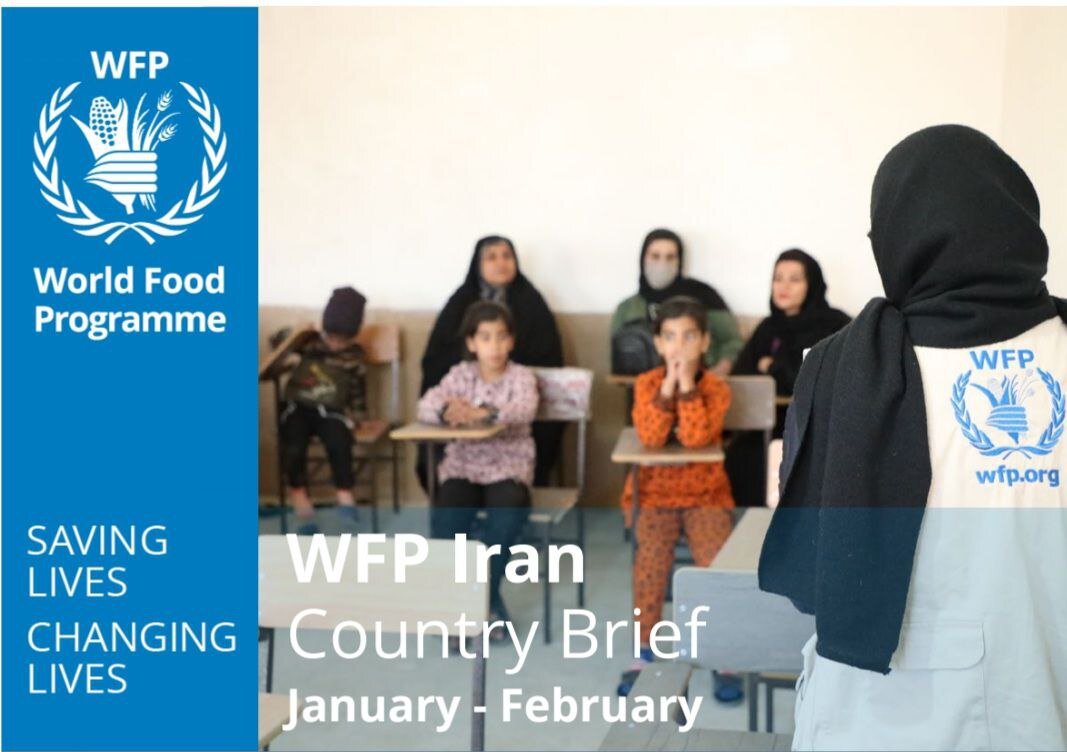WFP releases JanuaryFebruary report on Iran
WFP releases January-February report on Iran
TEHRAN – The World Food Program (WFP) has released a report, expounding on activities in Iran over the months of January and February.

In the first two months of 2025, WFP general food assistance reached 33,068 beneficiaries in January and 33,147 in February including both Afghan and Iraqi refugees.
WFP distributed 543 mt of fortified food in January and 405.5 mt in February, consisting of wheat flour (12 kg per person) and vegetable oil (810 ml per person).
In addition to this in-kind food assistance, WFP provides cash assistance to 7,394 and 7,315 Afghan and Iraqi refugee households in January and February, respectively.
Under cash-based transfers, following the revision of WFP’s Minimum Expenditure Basket (MEB) conducted in November 2024, the Centre for Aliens and Foreign Immigrants Affairs (CAFIA) confirmed adjustments to cash transfer values. As a result, WFP doubled its cash transfers starting in January to better support essential living costs.
In both months, households headed by refugee men received Iranian Rials (IRR) 5 million (US$ 7.5) per person. Households headed by refugee women received IRR 6 million (US$ 9) per person, due to limited access to working opportunities, leading to higher food insecurity.
Following WFP’s Disability Inclusion Workplan 2023, WFP implemented a pilot initiative in two settlements, Shahid Naseri of Markazi and Mohajerin of Semnan provinces, providing refugees with disabilities a monthly cash top-up of IRR 1.5 million (US$ 3) across eight settlements, on top of their regular entitlement.
In January, WFP supported 364 refugees with disabilities across nine settlements, and 374 in February across ten settlements, each receiving an additional monthly cash support of IRR 3 million (US$ 4.5), on top of their regular aid.
In February, assistance covered Kerman, Lorestan, West Azerbaijan, Fars, Khuzestan, Markazi, Khorasan Razavi, and Semnan provinces after initially being introduced to two refugee settlements across two provinces.
In March, the WFP released its 2023 report on Iran based on the interim Country Strategic Plan (2023-2025).
In 2024, WFP provided a combination of in-kind and cash assistance to address the food needs of over 33,000 vulnerable refugees in Iran. As a result, 70 percent of them were able to consume food at an acceptable level, a figure that remains nearly stable compared to the previous year.
Since August, WFP successfully increased the value of the cash transfer entitlement by 25 percent, actively helping to mitigate the immediate economic challenges reported by refugees.
WFP has maintained a presence in Iran since 1987, primarily focused on addressing the food security needs of refugees mainly from Afghanistan. Iran has hosted refugees for over four decades. Most refugees, along with those in refugee-like conditions, reside in urban, peri-urban, and rural areas, often integrated with host communities. However, the most vulnerable refugees living in 20 settlements across 13 provinces, face a precarious food security situation that necessitates continued humanitarian assistance by WFP.
WFP provided food assistance, educational support, and livelihood opportunities through in-kind food distributions, unconditional cash transfers, and capacity-strengthening initiatives to eligible refugees who live in settlements.
MT/MG
source: tehrantimes.com